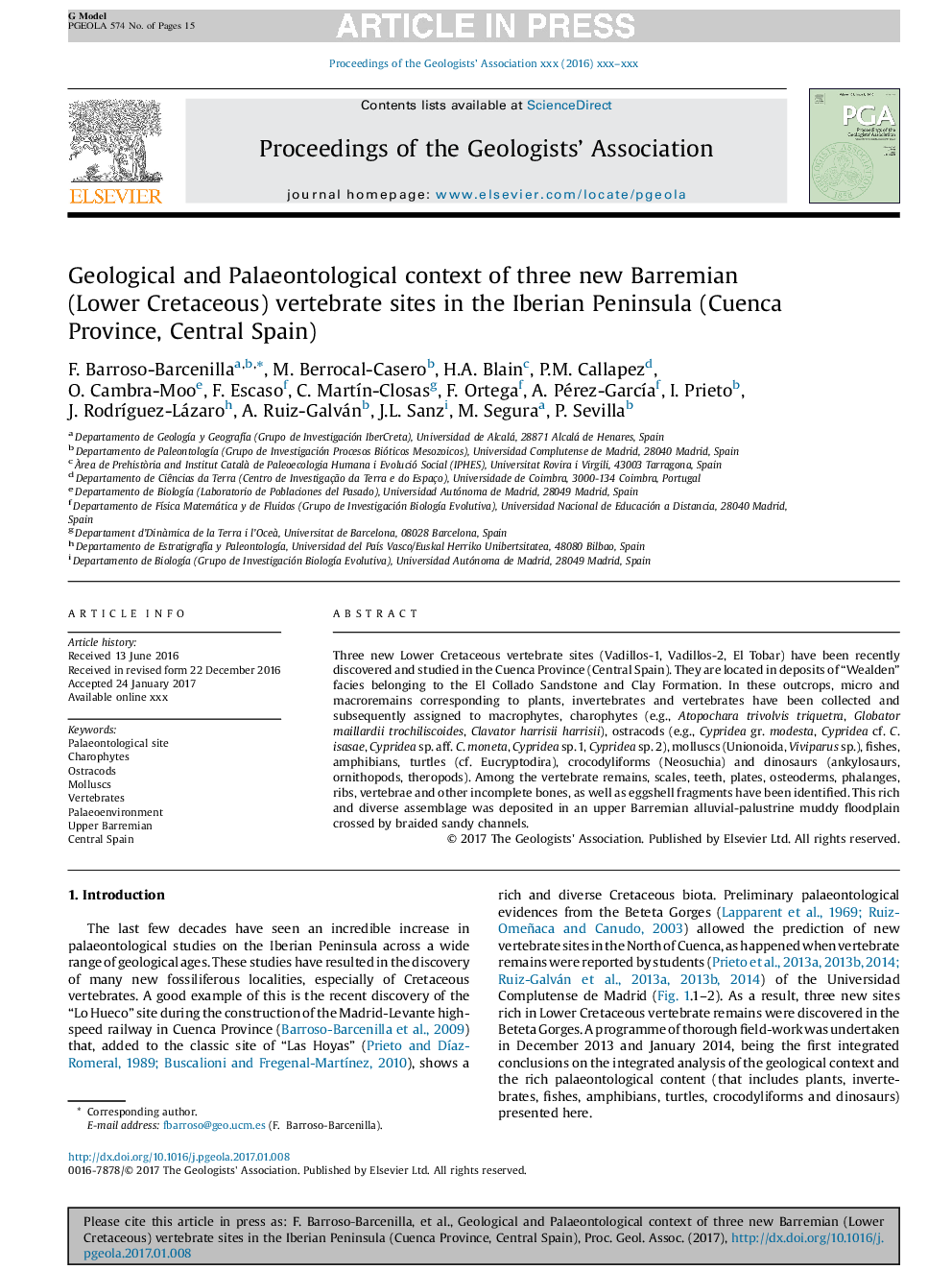| Article ID | Journal | Published Year | Pages | File Type |
|---|---|---|---|---|
| 5786478 | Proceedings of the Geologists' Association | 2017 | 15 Pages |
Abstract
Three new Lower Cretaceous vertebrate sites (Vadillos-1, Vadillos-2, El Tobar) have been recently discovered and studied in the Cuenca Province (Central Spain). They are located in deposits of “Wealden” facies belonging to the El Collado Sandstone and Clay Formation. In these outcrops, micro and macroremains corresponding to plants, invertebrates and vertebrates have been collected and subsequently assigned to macrophytes, charophytes (e.g., Atopochara trivolvis triquetra, Globator maillardii trochiliscoides, Clavator harrisii harrisii), ostracods (e.g., Cypridea gr. modesta, Cypridea cf. C. isasae, Cypridea sp. aff. C. moneta, Cypridea sp. 1, Cypridea sp. 2), molluscs (Unionoida, Viviparus sp.), fishes, amphibians, turtles (cf. Eucryptodira), crocodyliforms (Neosuchia) and dinosaurs (ankylosaurs, ornithopods, theropods). Among the vertebrate remains, scales, teeth, plates, osteoderms, phalanges, ribs, vertebrae and other incomplete bones, as well as eggshell fragments have been identified. This rich and diverse assemblage was deposited in an upper Barremian alluvial-palustrine muddy floodplain crossed by braided sandy channels.
Related Topics
Physical Sciences and Engineering
Earth and Planetary Sciences
Geology
Authors
F. Barroso-Barcenilla, M. Berrocal-Casero, H.A. Blain, P.M. Callapez, O. Cambra-Moo, F. Escaso, C. MartÃn-Closas, F. Ortega, A. Pérez-GarcÃa, I. Prieto, J. RodrÃguez-Lázaro, A. Ruiz-Galván, J.L. Sanz, M. Segura, P. Sevilla,
